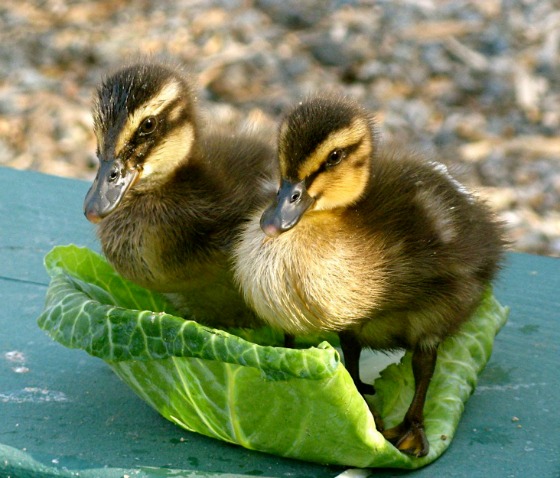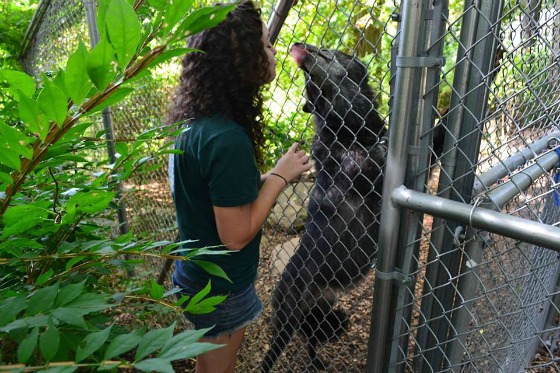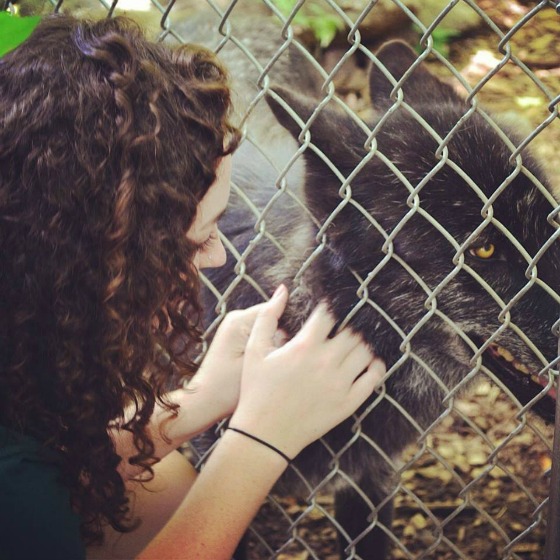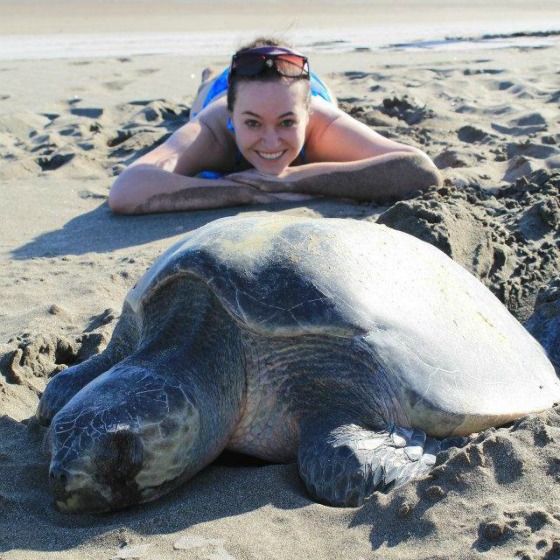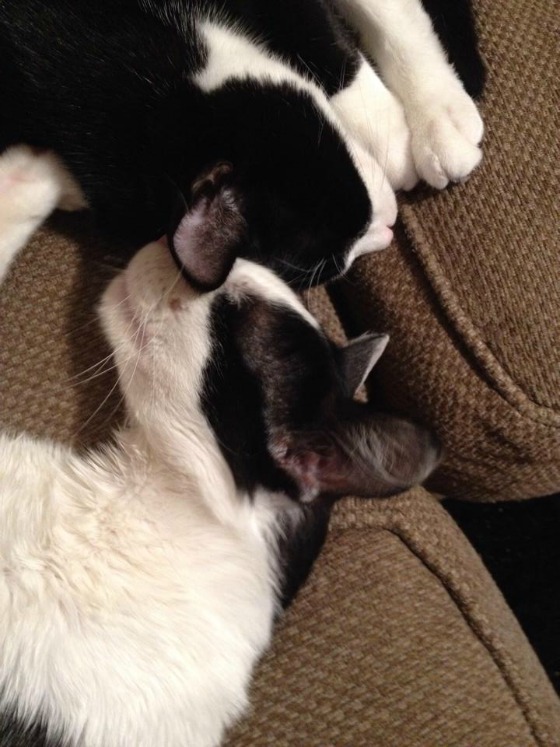
Animal Rescue: Expert Advice and How-Tos
Don’t feed ducks– or any wild animal– bread or other human food!
By Veronica and Dana Goin
Animal rescue can be a daunting mission. Kind-hearted people who find a stray often don’t know how to help or where to turn.
I’m very lucky; if I ever need to ask for advice about an animal, especially about rescuing a stray, I know exactly where to turn.
My sister Dana has always been one of those extraordinary people to whom animals are inexplicably and universally drawn. It’s as though she broadcasts a hum of sound inaudible to the human ear that says “It’s okay. I’m not going to hurt you. Everything is going to be okay.” With a background in wildlife conservation, she is an amazing resource for a would-be rescuer, and she was kind enough to detail how to rescue an animal while keeping safe (that means both you and the animals!).
Hanging out with Zephyr at the Wolf Conservation Center where Dana interns.
Here are the best practices we both abide by when presented with a stray animal:
+ If an animal seems threatening, do not approach them. Contact the nearest authorities (animal control or the local police department) and allow them to proceed.
+ If you feel you can approach the animal, please do so with the utmost caution. If an animal is frightened, you may potentially get bitten or scratched. Proceed slowly. A better alternative is to offer the animal some food and allow them to approach you.
+ Take the animal to the nearest available veterinarian. After the staff have treated any injuries, ask them to scan for a microchip to see if you have found a runaway pet. If there is no open or available veterinarian’s office and you choose to bring the animal home, please bear in mind that if you have other animals, you may potentially be bringing in unknown diseases or combining two animals who will behave aggressively towards one another. Please keep the stray separate from any existing pets. On the other hand, if you want to make your newly found companion feel comfortable, you can try giving it one of those pet accessories.
Dana adds:
+ I also try to leave animals that seem to be doing okay for themselves, though it is tempting to capture them all and place them in cozy, loving homes.
This is Otis (a baby bluebird that we had to save from being a wolf snack). He should have been brought to a rehab, but we thought we could spare him since he was a bit older and the parents were nearby. Unfortunately, the parents, for whatever reason, never came back for him and he died of exhaustion and possibly from the cold. Pretty heartbreaking. But now I’m a little more aware of what NOT to do.
+ Some clean towels or a heavy blanket
+ A small pet carrier
+ Water bowls and a couple bottles of water
+ Heavy duty gloves (such as gardening gloves) to protect your hands
+ A small, high-powered camping flashlight or head-lamp
+ Some strong smelling food (a couple cans of wet cat food, a small bag of dog food)
+ Individually wrapped antiseptic wipes
If you need to take the animal to a shelter, please try to find an open-admission no-kill shelter. These shelters save all healthy/treatable animals that they are given. Other shelters euthanize animals that have non-life-threatening health issues, or are considered unadoptable, or have exceeded the maximum amount of time for living in the shelter. If you need to find a no-kill shelter, this website is a great resource.
Dana has rescued five other cats and a rat that came right up to her front porch. This spring, she will graduate with a dual-bachelors in Wildlife Conservation and Agriculture & Natural Resources. I’m pretty convinced that this girl is going to change the world.
In her own words:
I think I’ve been blessed with a kind of instinctual understanding of animal cues which is why I’ve had such success catching them, and why I feel confident doing so. Maybe it’s because we’ve always had cats, but I feel like I understand dogs pretty darn well too. But something that I’ve noticed – which isn’t particularly surprising – is that I have the most success when I’m doing it alone.
I don’t necessarily have to be completely alone, but if I’m the only one that approaches the animal (and make sure to stop, back up, or look away to make them more comfortable with my presence … Or sit there for five hours waiting for them to warm up) they feel significantly less threatened. Most animals don’t like eye-contact! Our domesticated animals seem to have grown accustomed to it, but often when you think you’re gazing into the eyes of a stray dog or cat and sending telepathic signals of safety and warmth, they’re interpreting it as a challenge and will either accept the challenge and retaliate, or will be even more motivated to get the heck away from you. Both actions are driven by fear.
My two rescued cats, Pickle and Stanley, were both found by Dana. Pickle was a six-week-old kitten with his head caught in a fence; Stanley was about a year old, starving to death on the streets.
Pickle (top) and Stanley (bottom). If this isn’t an argument for Adopt Don’t Shop, I don’t know what is.
Do you have any rescued companion animals, fellow Eco-Chicks? I want to see pictures and hear stories! Share ’em on Twitter, Facebook, or here in the comments!
About Dana Goin

